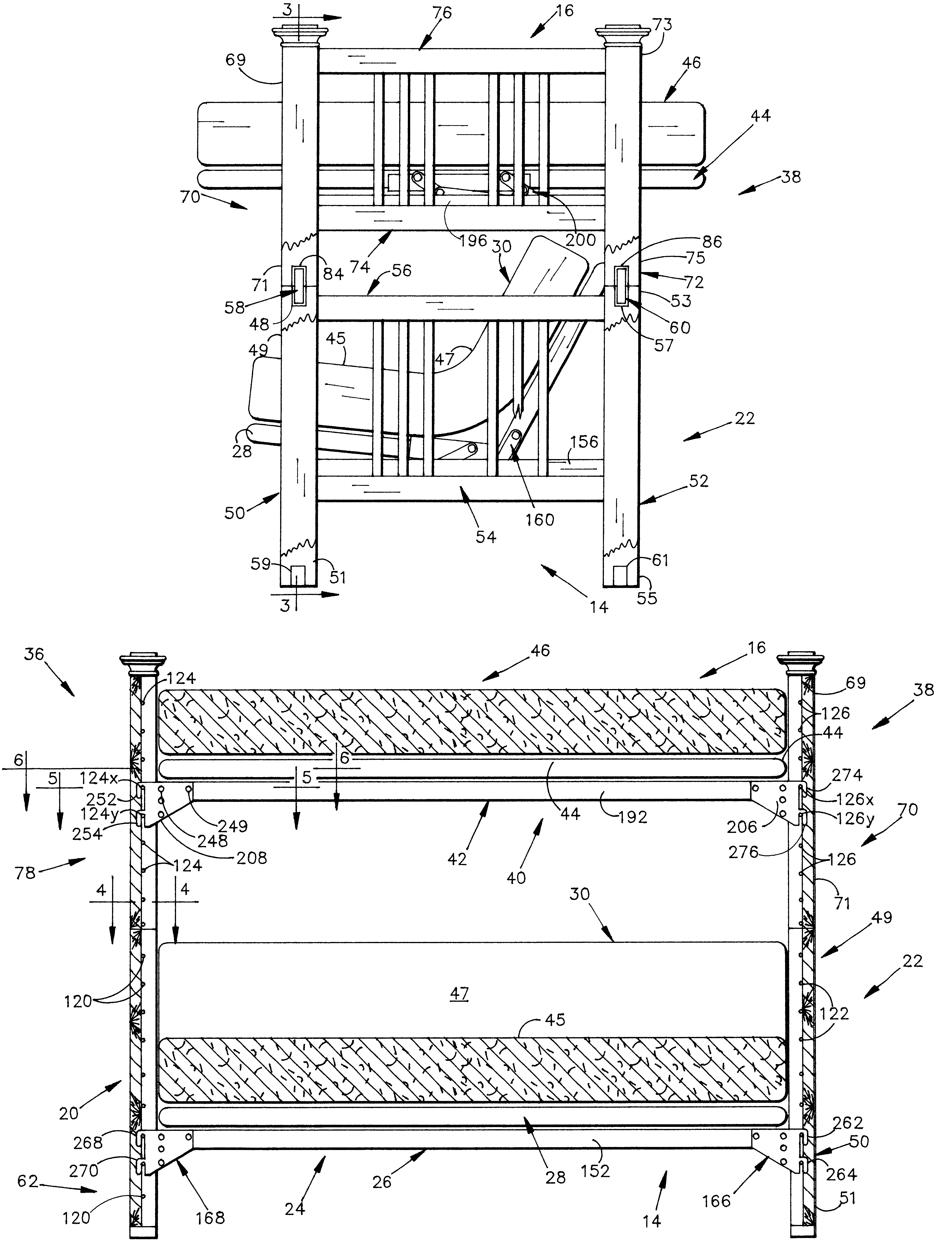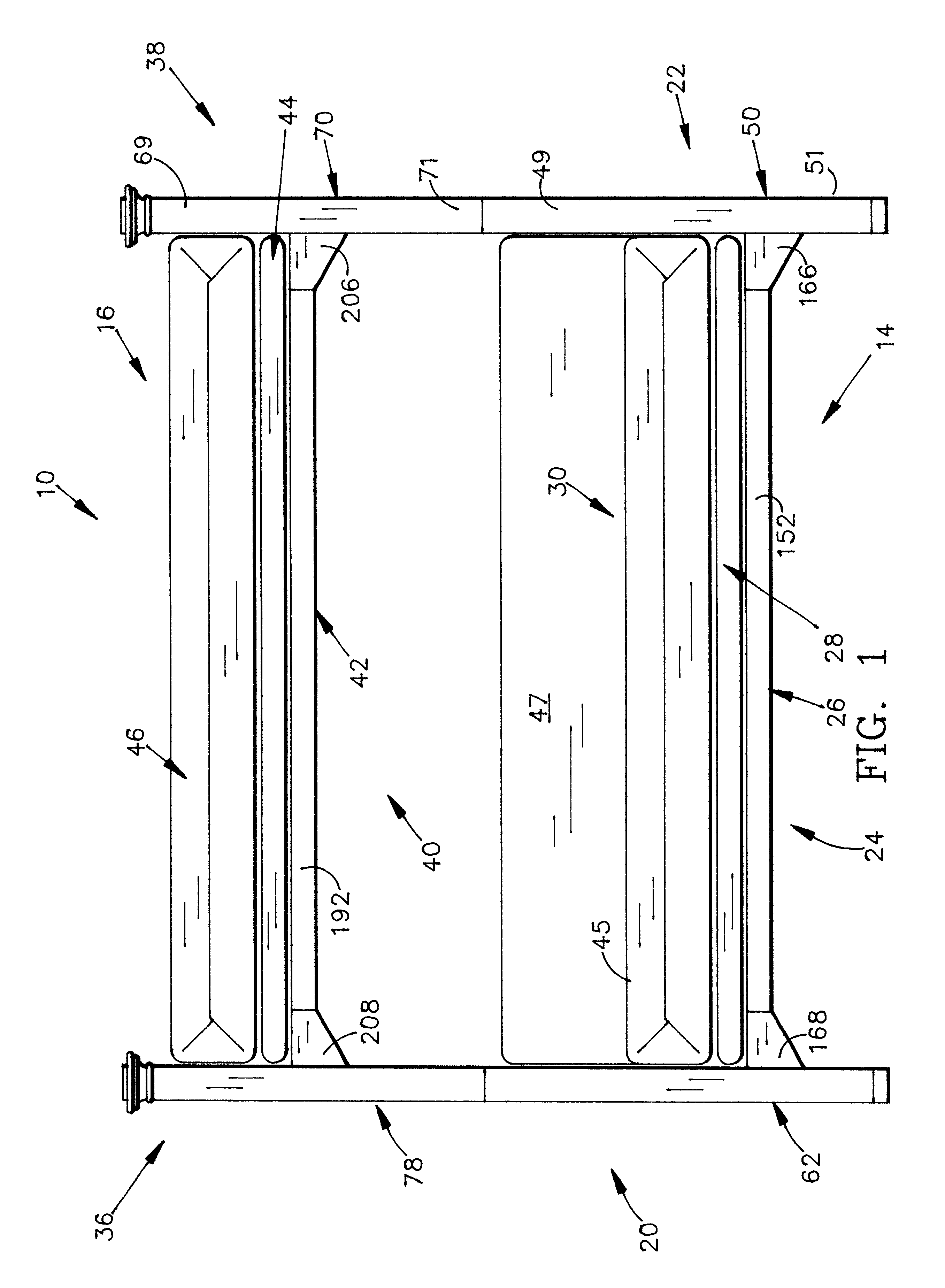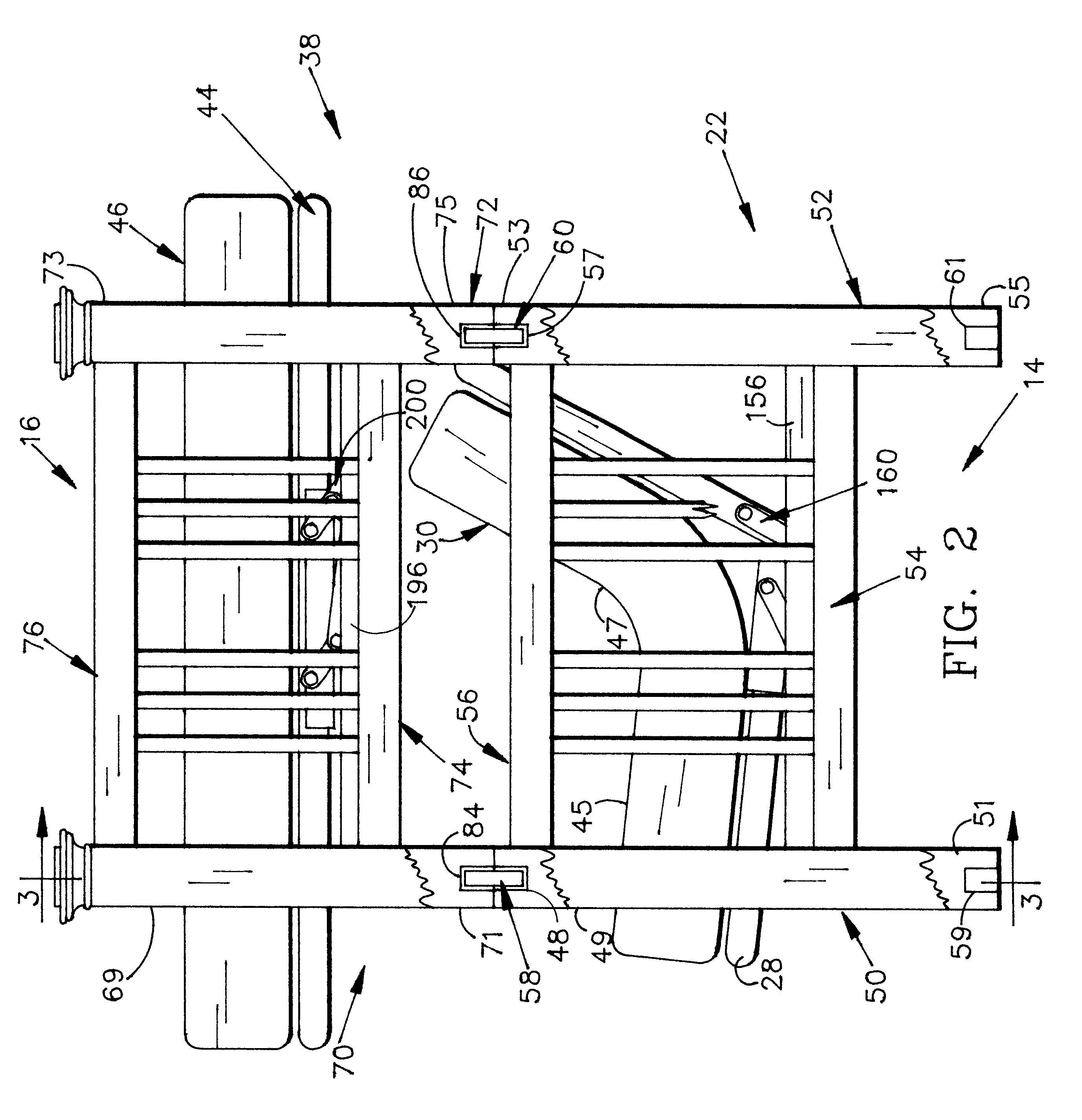Multi-positionable bed
- Summary
- Abstract
- Description
- Claims
- Application Information
AI Technical Summary
Benefits of technology
Problems solved by technology
Method used
Image
Examples
Embodiment Construction
The bunk bed 10 of the present invention includes a first (lower) bed assembly 14, and a second (upper) bed assembly 16. First bed assembly 14 includes a headboard 20 for supporting the head end of first bed assembly 14, and a footboard 22 for supporting the foot end of first bed assembly 14. A mattress frame assembly 24 extends longitudinally between headboard 20 and footboard 22 and includes a frame 26, that is coupled at its head end to headboard 20, and at its foot end to footboard 22. Frame 26 supports a mattress support 28, that, in bunk bed 10 of the present invention serves as a box spring. As will be described in more detail below, mattress support 28 is articulated, and includes two, generally planar portions joined together by a pair of hinges, that form a support on which a mattress 30 can be placed to overlay mattress support 28.
Certain direction-specific terms, such as "upper", "lower", "headboard" and "footboard" will be used in this application for purposes of clarit...
PUM
 Login to View More
Login to View More Abstract
Description
Claims
Application Information
 Login to View More
Login to View More - R&D
- Intellectual Property
- Life Sciences
- Materials
- Tech Scout
- Unparalleled Data Quality
- Higher Quality Content
- 60% Fewer Hallucinations
Browse by: Latest US Patents, China's latest patents, Technical Efficacy Thesaurus, Application Domain, Technology Topic, Popular Technical Reports.
© 2025 PatSnap. All rights reserved.Legal|Privacy policy|Modern Slavery Act Transparency Statement|Sitemap|About US| Contact US: help@patsnap.com



